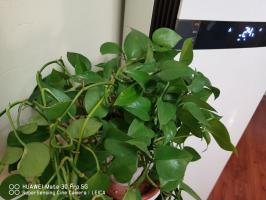How to Move a Tomato Plant Indoors
Tomatoes are a popular and versatile fruit that can be grown both indoors and outdoors. However, if you live in an area with cold winters or want to extend your tomato growing season, moving your tomato plant indoors is a great option. Here are some steps to follow to ensure a healthy and successful move:
Choose the Right Time
The first step in moving a tomato plant indoors is to choose the right time. You want to wait until the plant has stopped producing fruit and is in a state of dormancy. This typically occurs in the fall, so it’s best to move your tomato plant indoors before the first frost. Moving the plant during the winter or early spring may cause it to go into shock, which can stunt growth and damage the plant.
Find the Right Location
Once you’ve decided to move your tomato plant indoors, you need to find the right location for it. Tomato plants need plenty of sunlight, so you want to choose a spot that gets as much natural light as possible. A south-facing window is ideal, but if your tomato plant won’t get enough light from a window, you may need to supplement with grow lights. You also want to make sure the area is warm enough for the plant to thrive. Tomatoes prefer temperatures between 65-75°F during the day and 60-65°F at night.
Prepare the Plant
Before moving your tomato plant indoors, you need to prepare it for the transition. First, prune the plant back to about one-third of its original size. This will ensure the plant can focus on regrowing its roots and adapting to its new environment. Next, check the plant for pests and disease. You don’t want to bring any unwanted guests indoors with the plant. Finally, transplant the plant into a pot that’s 2-3 inches larger than its current container. Use a high-quality potting mix and make sure the plant is level with the soil surface.
Water and Fertilize
Once your tomato plant is indoors, it’s important to keep an eye on its water and fertilization needs. Tomatoes need consistent moisture, but you want to avoid over-watering, as this can lead to root rot. Wait until the top inch of soil is dry before watering, and make sure any excess water can drain away. You also need to fertilize the plant regularly to ensure healthy growth. Use a balanced fertilizer with equal parts nitrogen, phosphorous, and potassium. Apply the fertilizer every two weeks.
Watch for Problems
After moving your tomato plant indoors, you want to keep a close eye on it for any signs of problems. Watch for pests like spider mites, aphids, and whiteflies, and treat them promptly with organic insecticides. You also want to watch for signs of disease, such as yellowing or browning leaves, and treat them accordingly. Keeping your tomato plant healthy indoors requires diligence and attention to detail, but with the right care, your plant can thrive.
Conclusion
Moving a tomato plant indoors can be a great way to extend your growing season and enjoy fresh tomatoes year-round. By choosing the right time, finding the right location, preparing the plant, watering and fertilizing, and watching for problems, you can ensure a healthy and successful move. With a little bit of care and attention, your indoor tomato plant can produce delicious fruit for months to come.

 how many times do yo...
how many times do yo... how many planted tre...
how many planted tre... how many pine trees ...
how many pine trees ... how many pecan trees...
how many pecan trees... how many plants comp...
how many plants comp... how many plants can ...
how many plants can ... how many plants and ...
how many plants and ... how many pepper plan...
how many pepper plan...































